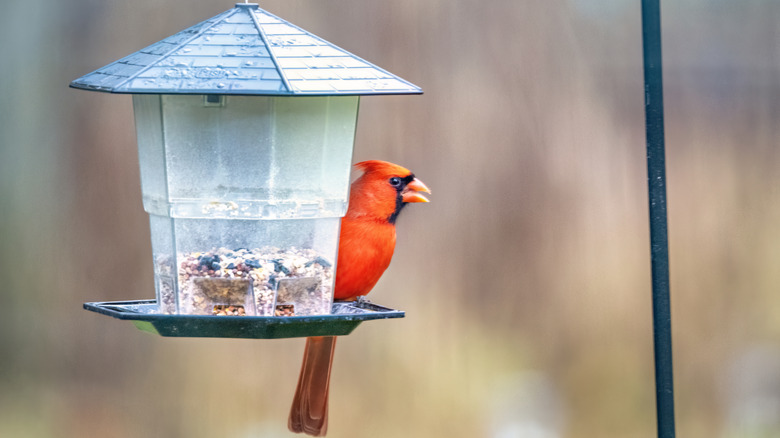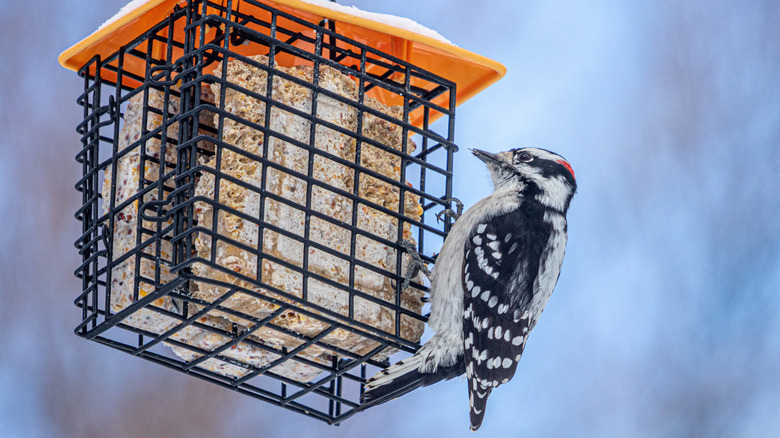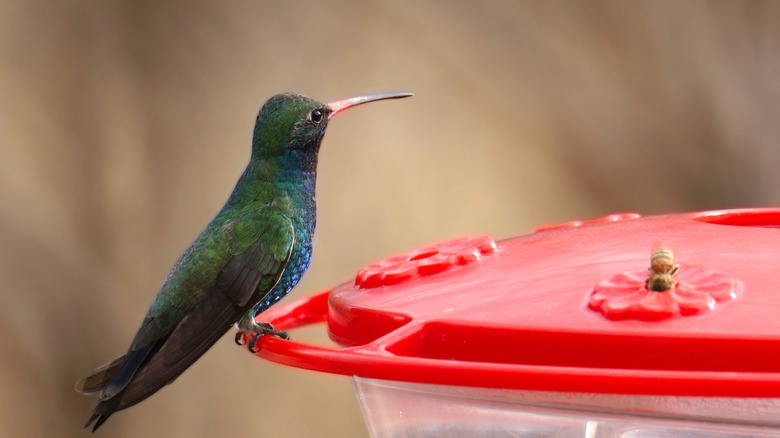Think Twice Before Using Cheese To Attract Birds To Your Yard. Here's Why
In researching ways to draw more birds to your backyard feeders, you may have stumbled across articles touting shredded or grated cheese as a foolproof lure for feathered guests. "Well, I do have some shredded mozzarella left from making lasagna," you might have thought. "I'm sure it can't hurt."
But is cheese actually beneficial for your flying friends? Or is this advice unintentionally harmful misinformation? If you've done some digging on the subject yourself, you've probably encountered myriad contradictory answers to these questions. In fact, offering cheese at your feeders is, as such dietary concerns often are, all about moderation and thoughtful selection.
Birds can have cheese, but it isn't part of their natural diet and should only ever be considered a treat, not a mainstay of your feeders. (If your reason for offering treats other than seeds was the annoyance of unwanted and unexpected plants sprouting around your yard and garden from dropped seeds, before you reach for the cheese drawer, remember that stopping bird seeds from germinating is as easy as popping them in the oven.)
Cheeses to avoid feeding to birds
When selecting tempting tidbits, it's important to consider what birds do and don't need from their food. Fat and protein are both necessary for energy –- especially in cold winter months for thermoregulation –- and cheese can provide both. However, keep in mind that cheese can be high in sodium. Birds do need some sodium in their diet, but too much can lead to serious health problems so it is important to carefully select low-sodium cheeses. Some birds may also have difficulty digesting lactose, as their bodies may lack the enzymes to break it down properly, so too much cheese may lead to diarrhea.
High-sodium cheeses to avoid include cottage cheese and American cheese. Additionally, birds can have difficulty managing cheeses that are too soft, such as brie, as these may become caked in their feathers, making hygiene and even flight potentially difficult. Soft cheeses also tend to have more lactose in them.
Some cheeses are flavored or mixed with onion or garlic — these should also be avoided, as alliums may be toxic to birds. Additionally, check any cheese to ensure it hasn't grown mold, as this could make birds sick. Another consideration is the potential for raw milk products to carry the highly contagious bird flu strains that have been affecting birds and cattle globally, according to Cornell University researchers. While it's unclear if feeding cheese to wild birds carries any risk of spreading the virus, the pasteurization process has been shown to kill the virus, so out of an abundance of caution, try to avoid soft cheeses made with raw milk.
Choosing cheeses and other foods to attract birds
So what cheeses can you offer? Mild cheddar and Swiss are good choices due to their comparatively low sodium and lactose content. Parmesan, which has a bit more sodium but almost no lactose, is also a good choice in moderation. Try grating the cheese or breaking it up into tiny chunks to make it more manageable for small beaks — cardinals, thrushes, house sparrows, wrens, great tits, and starlings may appreciate the bite-sized goodies.
If even the slim chance of upsetting birds' tummies gives you indigestion, consider an alternative such as suet – beef or other animal fat — which birds have no trouble digesting (of note: as an animal product, suet does spoil quickly, so keep an eye on it!). One of the most sought-after foods at a bird feeder, however, is peanuts: High in protein and fat, unsalted peanuts will definitely be a huge hit with your backyard birds. You might even consider making your own bird food out of peanut butter and seeds so your visitors can enjoy a gourmet experience.
Consider trying to attract the attention of birds who prefer other foods, as well. Orioles, for example, might flock to a cut orange. Depending on where you live, you might even make a hummingbird feeder and ditch the seeds and cheese entirely! Find out what species are often seen in your area and do some dedicated research to figure out what foods will make the best lures.


